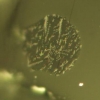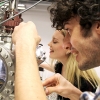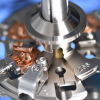News
Surface Analysis News
Titanium dioxide (TiO2) is one of the most promising materials for photovoltaics and photocatalysis nowadays. This material appears in different crystalline forms, but the most attractive one for applications is “anatase”. EPFL scientists have now shed light onto the problem by a combination of steady-state and ultrafast spectroscopic techniques, as well as theoretical calculations.
A new description of electron scattering in the surface layers of samples proposed by the Institute of Physical Chemistry of the Polish Academy of Sciences in Warsaw significantly speeds up materials analysis and enables a better understanding of what can really be seen in a sample.
Tiny beads of volcanic glass found on the lunar surface during the Apollo missions are a sign that fire fountain eruptions took place on the Moon’s surface. Now, using secondary ion mass spectrometry, scientists from Brown University and the Carnegie Institution for Science have identified the volatile gas that drove those eruptions.
Silver is often used as a coating on medical equipment used for chemotherapy, but this silver coating can break down drugs. With the help of XPS, researchers have found a graphene coating that will help boost the effect of chemotherapy.
The US Naval Research Laboratory has a new Local Electrode Atom Probe instrument to help in the engineering of new materials.
Super-eruptions are not the only type of eruption to be considered when evaluating hazards at volcanoes with protracted eruption histories, such as the Yellowstone (Wyoming), Long Valley (California), and Valles (New Mexico) calderas in the USA. There have been more than 23 effusive eruptions of rhyolite lava at Yellowstone since the last caldera-forming eruption ~640,000 years ago, all of similar or greater magnitude than the largest volcanic eruptions of the 20th century.






